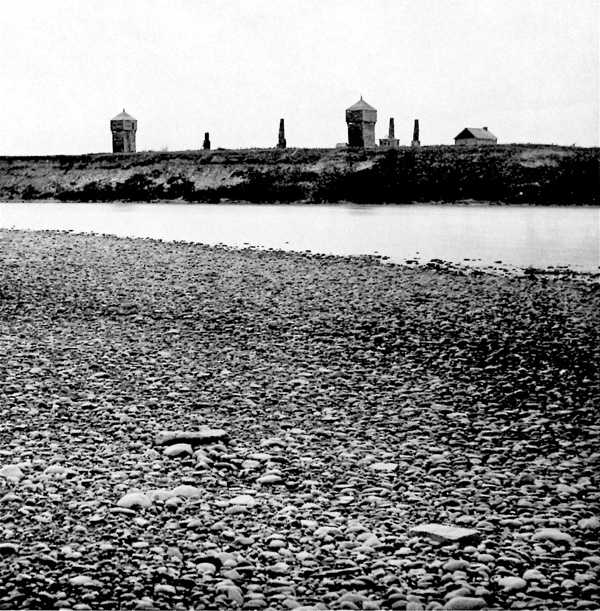|
|
 |
Canadian Historic Sites: Occasional Papers in Archaeology and History No. 1
Archaeological Investigations of the National Historic Sites Service, 1962-1966
by John H. Rick
Excavations in Alberta
Rocky Mountain House
In 1861, the first post at Rocky Mountain House was
abandoned because of increasing friction between the Hudson's Bay
Company employees there and the Blackfoot Indians in whose territory
the post had been built. This withdrawal provided no lasting solution
since the Blackfoot were then forced to travel to Fort Edmonton to
trade. There they encountered the more numerous Cree and the resulting
strife added to the difficulties of the Edmonton traders. As a result,
the Company decided to resume trading at Rocky Mountain House and, in
1865, construction started on a new post half a mile downstream. Work
was seriously delayed due to crop failures and shortages of game animals
so that it was probably not much before 1869 that Rocky Mountain House
II was finally occupied. The new fort, never a great economic success,
was abandoned in 1875 in favour of a post at Calgary and the remains
were destroyed by fire in 1882 (Lee 1965b).
In 1966, a contract was awarded to the University of
Calgary to carry out excavations at Rocky Mountain House II and the
university appointed Claude A. Vaucher to direct the project. The site
is located on the north bank of the North Saskatchewan River some three
miles southwest of the town of Rocky Mountain House. The immediate need
for the excavation was the threat of river erosion which had already
destroyed the east palisade and bastions.
Four major buildings and two bastions were located
and tested. The location and construction details of the palisade were
determined and the north and west gates were excavated. The area
enclosed by the palisade, about 220 ft. x 440 ft., was double that which
had been expected and it would appear that the southern half had been a
garden or corral. Sampling of the features was sufficient to provide a
clear understanding of the construction and layout of the post.
Excavation has borne out the accuracy, even to details, of a surviving
sketch of the site made in 1873. Artifacts were relatively
few and these are currently under study (Vaucher 1966).

16 After the Blackfoot forced the abandonment of
the first Rocky Mountain House in 1861, a new post with the same name was
built about one-half mile downstream in 1866. This was in turn abandoned
in 1875 and the photograph shows its ruins from the south side of the
North Saskatchewan River in 1886.
(Geological Survey of Canada.)
|
|

